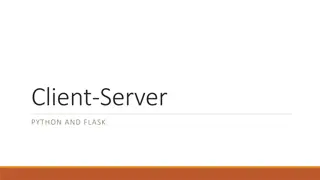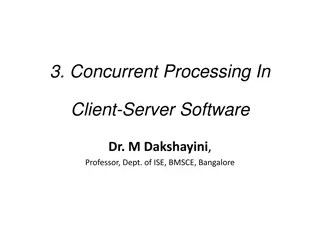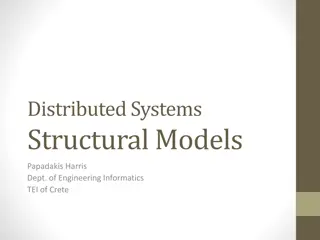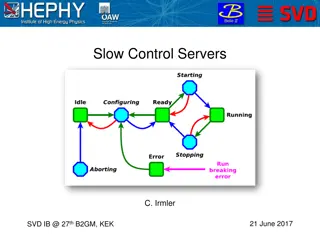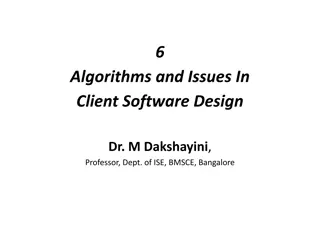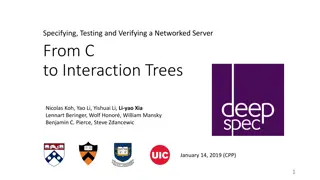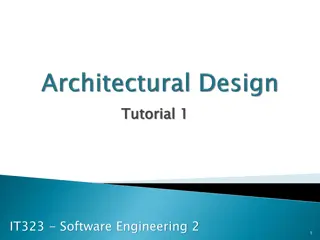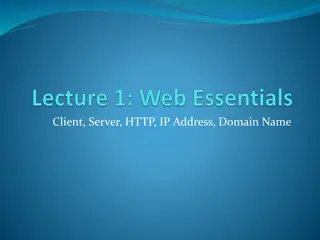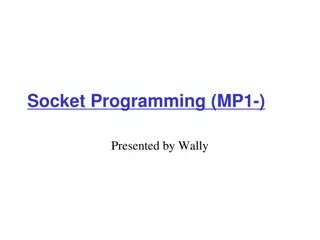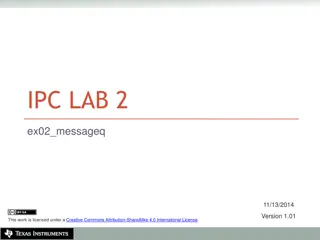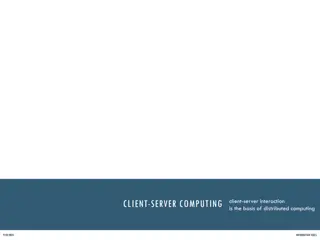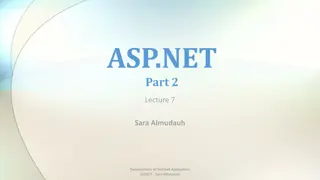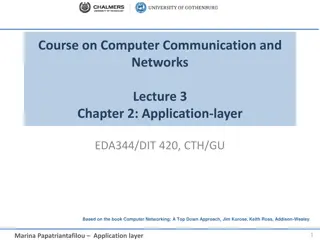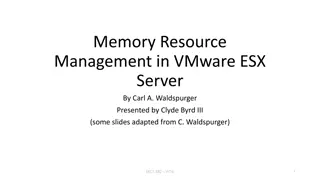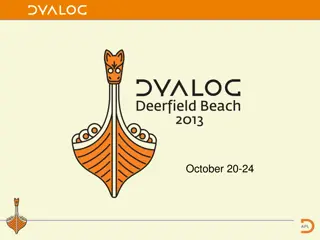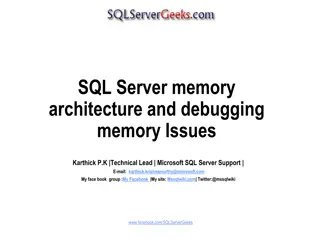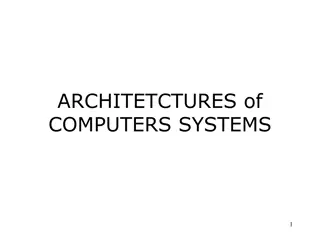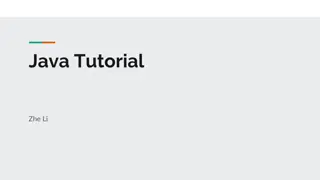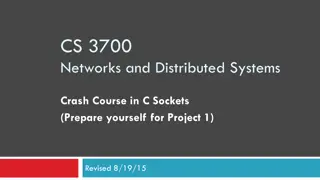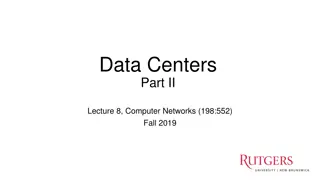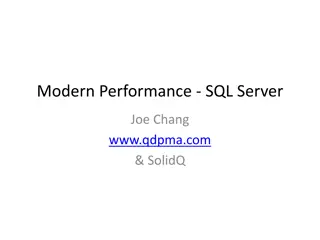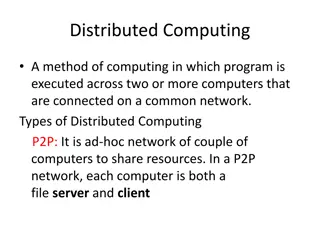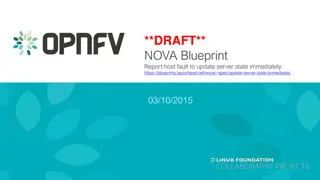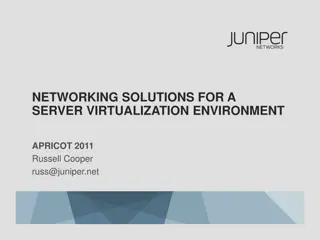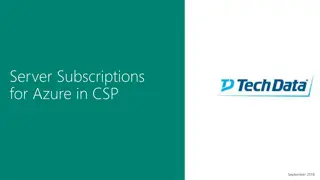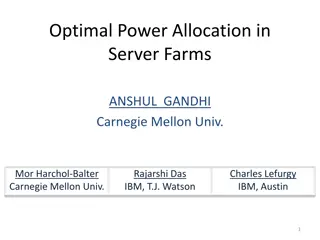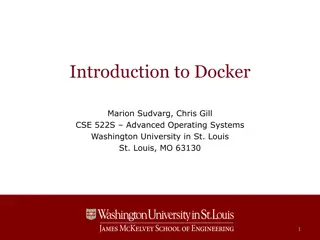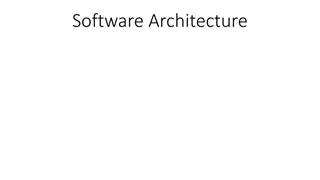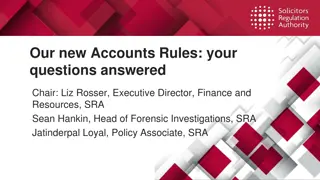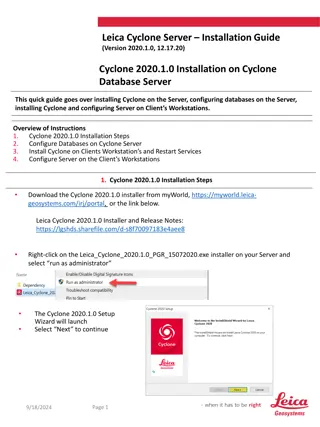Understanding Client/Server Computing Architecture
Client/Server Computing architecture separates clients and servers over a network, allowing for file sharing, resource allocation, and service requests. Clients initiate services from servers, with transparent server locations and message-passing transactions. Systems with C/S architecture include file servers, database servers, transaction servers, and web servers. The model varies between fat clients (more application processing on client side) and fat servers (more processing on server side). The architecture can be classified into two-tier (file and database servers) and three-tier (web and distributed objects) based on application division.
Download Presentation

Please find below an Image/Link to download the presentation.
The content on the website is provided AS IS for your information and personal use only. It may not be sold, licensed, or shared on other websites without obtaining consent from the author. Download presentation by click this link. If you encounter any issues during the download, it is possible that the publisher has removed the file from their server.
E N D
Presentation Transcript
1 #01 Client/Server Computing 240-311 DISTRIBUTED COMPUTERS AND WEB TECHNOLOGIES (3-0-6)
Distinct characteristics of C/S 2 Client-server is a computing architecture which separates a client from a server It is almost always implemented over a computer network The most basic type of client-server architecture employs only two types of nodes: clients and servers. This type of architecture is sometimes referred to as two-tier. It allows devices to share files and resources. Server provides the service Client is considered as the customer requesting the service
Distinct characteristics of C/S 3 The server service can be shared among a number of clients Clients must request or initiate the service The location of the server in the network is transparent to clients Transaction between C/S is message-passing based C/S architecture is scalable horizontally (more clients can added) Vertically (more servers can be added) The server is centrally maintained where as clients are independent of each other
Systems with C/S Architecture 4 File servers File sharing and file processing Database servers Client Server Passing file results Client Example: Query in DBMS server Typically one single request/reply Transaction servers Transaction server includes DBMS and transaction monitoring Server has remote procedures run online by the client Web servers Super-fat servers and thin clients Uses HTTP protocol Client HTML Application Internet Server Client Java
Client/Server Models 5 Where to push the application to Fat clients The bulk of the application is running on the client The client knows how the data is organized and where it is Different clients access the same applications different ways Fat servers The server more complicated The clients are less complex More of the code runs on the server The network interaction is minimized Application Client Server
Two-Tier vs. Three-Tier 6 Same basic idea as fat-client versus fat-server Depends on how the application is divided between the server and the client Two-tier servers Examples: file servers and database server In this case the process (application logic) is buried within the client or server (or both) Three-tier servers Examples: Web and distributed objects In this case the process is run on the middle-tier separated from the user and data interface They can integrate the data from multiple sources More robust and more scalable
Tier Architecture 7 Presentation Logic Business Logic Data Source 2 Tier - Fat Client Client Server 2 Tier - Thin Client (or Fat Server) Client Server 3 Tier Application Server Database Server Client
Client (dumb) - Server Model 8 Server Client Presentation Logic Network Application Logic DBMS
True Client-Server Model 9 Server Client Application Logic Presentation Logic Network DBMS
Distributed Client-Server Model 10 Server Client Application Logic Application Logic Network DBMS Presentation Logic
Client/Server Computing 11 Logical extension of modular programming with assumption that separation of a huge program into modules can create the possibility for further modification easier development better maintainability. All large modules need not all be executed within the same memory space. the calling module becomes the client( requesting service) the called module becomes the server (providing service).
Client/Server Computing 12 Clients and Servers are running separately on appropriate hardware and software platforms for their functions. For example, database management system servers running on platforms specially designed and configured to perform queries, or file servers running on platforms with special elements for managing files. Components in Client-Server Computing Client Server In client-server computing major focus is on SOFTWARE Middleware
Middleware Software 13 It is the (/) between client and server which glues them together Allowing the client request for a service and the server providing it Middleware can also be between server/server Two broad classes General LAN servers, TCP/IP, Communication stacks, Queuing services, etc. Application specific Used to accomplish a specific task Groupware specific: SMTP Internet specific: HTTP Database specific: SQL
14 calling procedure called procedure arguments arguments results results calling procedure (client) client stub network transport server stub network transport arguments results request message request message reply message reply message called procedure (client) Network Local Procedure Call Remote Procedure Call
Six types of middleware 15 1. Asynchronous Remote Procedure Calls (RPC) client makes calls to procedures running on remote computers but does not wait for a response If connection is lost, client must re-establish the connection and send request again. High scalability but low recovery, largely replaced by type 2 Synchronous RPC 2. distributed program may call services on different computers makes it possible to achieve this without detailed coding (e.g. RMI in Java) Publish/Subscribe (often called push technology) 3. server monitors activity and sends information to client when available. It is asynchronous, the clients (subscribers) perform other activities between notifications from the server. Useful for monitoring situations where actions need to be taken when particular events occur.
Six types of middleware 16 4. Message-Oriented Middleware (MOM) asynchronous sends messages that are collected and stored until they are acted upon, while the client continues with other processing. Object Request Broker (ORB) 5. object-oriented management of communications between clients and servers. ORB tracks the location of each object and routes requests to each object. SQL-oriented Data Access 6. middleware between applications and database servers. Has the capability to translate generic SQL into the SQL specific to the database
Computing Model 17 Computing Model Terminal Host Model Distributed Computing Model File Transfer Model Client/Server Model Peer to Peer Model
References 18 Farid Farahmand, "An Introduction to Client/Server Architecture" Rajkumar Buyya, "Client/Server Computing (the wave of the future)" Albert Yau, "Client Server Computing", http://www.doc.ic.ac.uk/~nd/surprise_95/journal/vol1/wcy/article1.html



